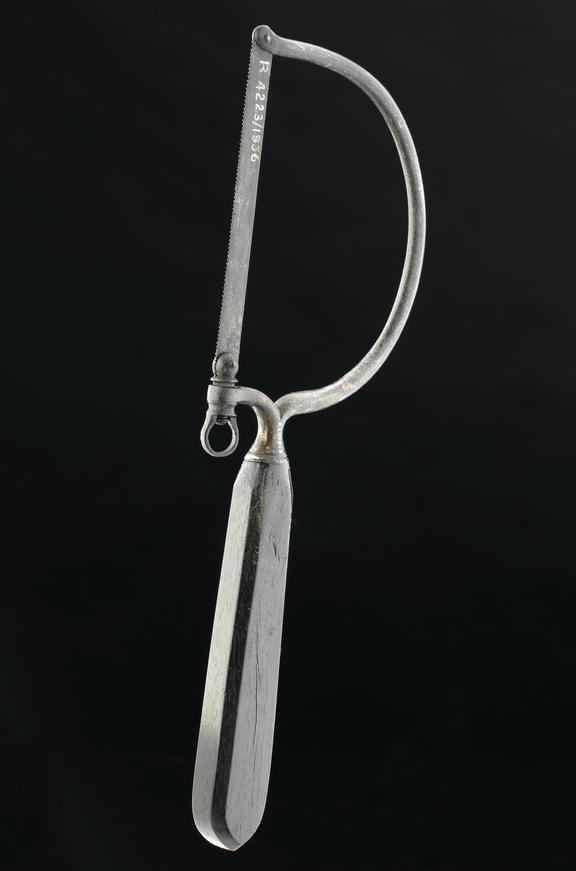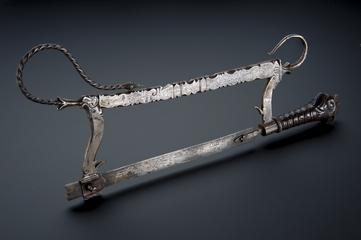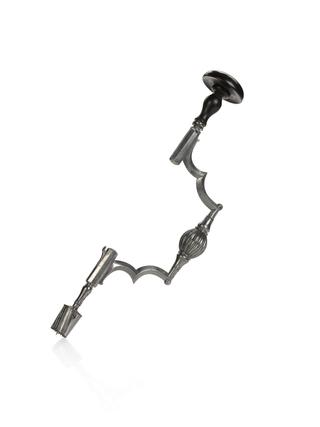

Metacarpal bow-frame saw designed by Benjamin Bell, c. 1750
Invented by Benjamin Bell (1749-1806), a Scottish surgeon, this amputation saw was designed to amputate the bones in the hand – known as metacarpal bones. During Bell’s life time, surgery was carried out with limited pain relief as anaesthetics did not come into use until the 1840s.
It became traditional in the United Kingdom for a small bow saw like this one to be used for hand amputations. Elsewhere in Europe, wire saws were used. The ends of the wire saw were held in each hand and pulled to the left and then to the right in a sawing motion.
Details
- Category:
- Surgery
- Collection:
- Sir Henry Wellcome's Museum Collection
- Object Number:
- A600822
- Materials:
- blade, steel, frame, steel and handle, ebony, wood
- type:
- amputation saw




